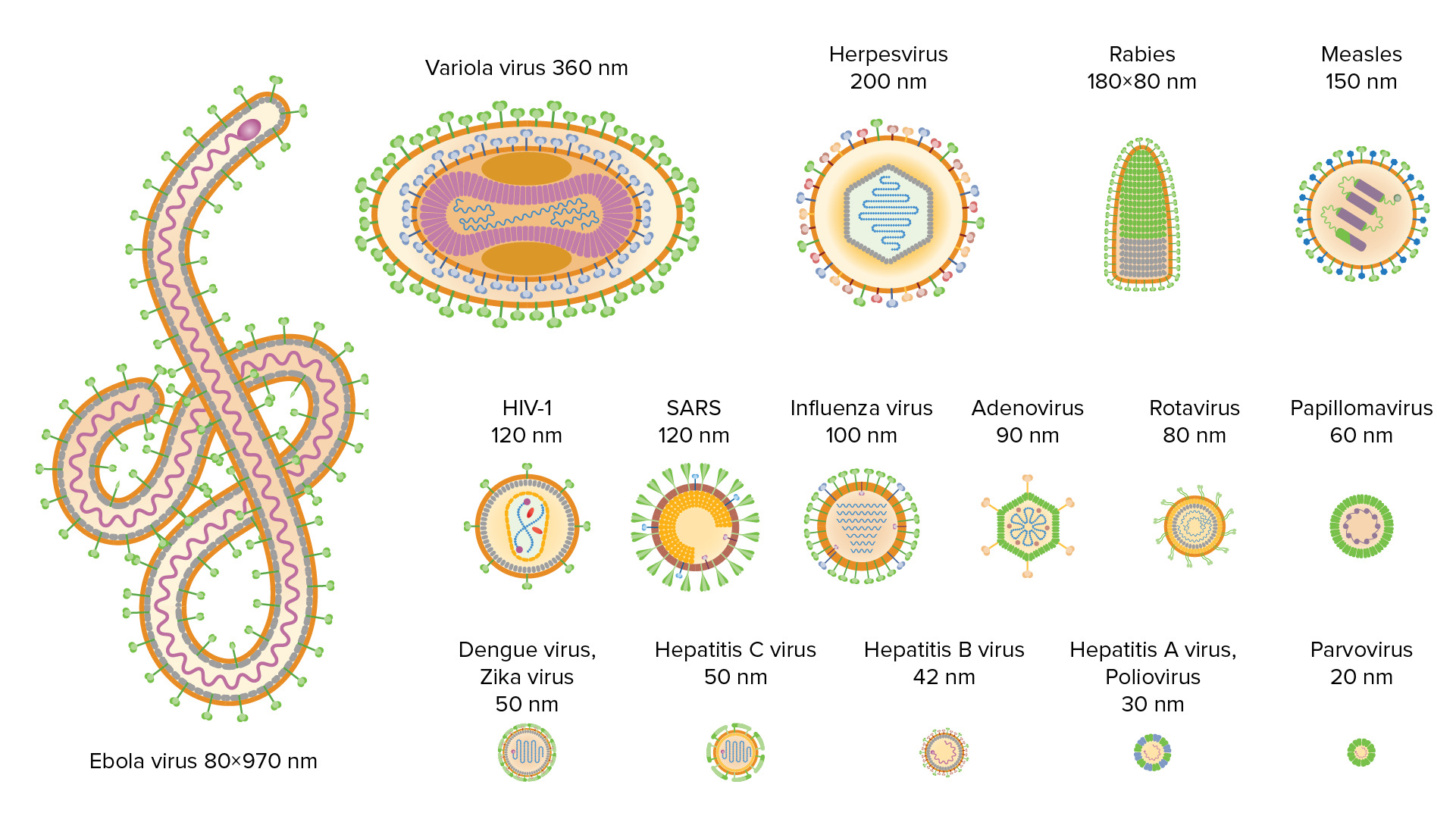Playlist
Show Playlist
Hide Playlist
Virus Overview – Viruses
-
Slides 03 Viruses MicrobiologyBasic V3.pdf
-
Download Lecture Overview
00:01 Hello and welcome to the world of viruses. After listening to this lecture today, I hope you'll be able to know when and how viruses were discovered. I hope you'll understand the defining features of viruses. You should appreciate that viruses are everywhere and outnumber cellular life. You will know that there are good viruses, as well as bad viruses. 00:29 And finally, you'll be able to answer the question: Are viruses alive? We live and prosper in a cloud of viruses. Viruses infect all living things on the planet. 00:48 We regularly eat, touch and breathe billions of virus particles on a daily basis. As I sit here today, I'm probably inhaling some viruses and depending on what you're doing, if you're eating something, you're probably eating viruses as well. We simply can't escape them. More amazingly perhaps, is that we carry viral genomes as part of our genetic material. 01:18 That's right, I'm about 8% viral and so are you. The number of viruses on the planet is staggering. Let's just consider the number of viruses that infect bacteria, these are called bacteriophages. In the waters of the world, it's estimated that there are over 10 to the 30th bacteriophages; this is a huge number, bigger than Avogadro's number. So let's try and put this into a form that maybe it's easier to understand. 01:58 A phage particle weighs about 10 to the -15 grams, that's a femtogram. So if we multiply that by the 10th to the 30th total bacteriophage particles on earth, we get a number that is staggering. That biomass exceeds the weight of elephants by over a thousand fold. So this is a virus that you can't even see, but there are so many of them on the planet that they weigh a 1000 times more than elephants. Alright so let's look at it another way, maybe you don't care too much about that way of looking at it, let's say we take these 10 to the 30th bacteriophages and we lined them up end to end in a straight line. That line of 10 to the 30th phages would stretch for 100 million light years. That's a long time. That's farther than the nearest galaxy into space. Again, these are particles that you can't even see, but the point is that there are so many of them, that they weigh a lot and that they can go long distances when you line them up end to end. 03:12 One of the main things I'd like you to take away today is that viruses are not just purveyors of bad news. I think most people on the planet think when they hear the word virus, they hear infection or disease. I'd like you to understand that viruses are mostly good. 03:33 For example there are more viruses in a liter of coastal seawater than there are people on earth. Just go to the ocean some time with a liter and pick up some of that ocean water and if you look at it, you're looking at more viruses in that liter than people on earth. 03:51 And these two pie charts illustrate this. If you simply look at biomass in the waters, prokaryotes are a greater fraction of biomass than protists or viruses. But if you look at the abundance in terms of the number of particles, on the right-hand pie chart in green, you can see that viruses outnumber everything else on the planet. There is just more of them than anyone else. 04:19 Another interesting fact is that today we are in the middle of a pandemic caused by HIV, human immunodeficiency virus, the agent of AIDS. Right now we know that there are 10 to the 16th HIV genomes on the planet right at this very moment. What does that number mean? It's a big number, not as big as 10 to the 30th, but it's still big. Well what it means is that among those 10 to the 6th genomes, there are already genomes resistant to every antiviral we have today. We have over 30 different antivirals to treat infections with HIV, but there is already resistance out there to every one of them. What's more astonishing is that there is also resistance to any new antiviral we would ever develop, that's how big 10 to the 16th is. Each of us is infected with at least a dozen viruses at
About the Lecture
The lecture Virus Overview – Viruses by Vincent Racaniello, PhD is from the course Microbiology: Introduction.
Included Quiz Questions
What percentage of the human genome is derived from viral DNA?
- 8%
- 0%
- 16%
- 21%
- 29%
Which of the following are most abundant in water?
- Viruses
- Bacteria
- Fungi
- Protists
- Eukaryotes
Customer reviews
5,0 of 5 stars
| 5 Stars |
|
5 |
| 4 Stars |
|
0 |
| 3 Stars |
|
0 |
| 2 Stars |
|
0 |
| 1 Star |
|
0 |




